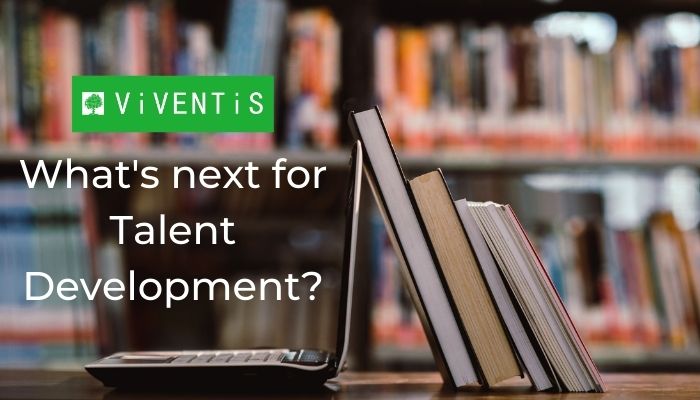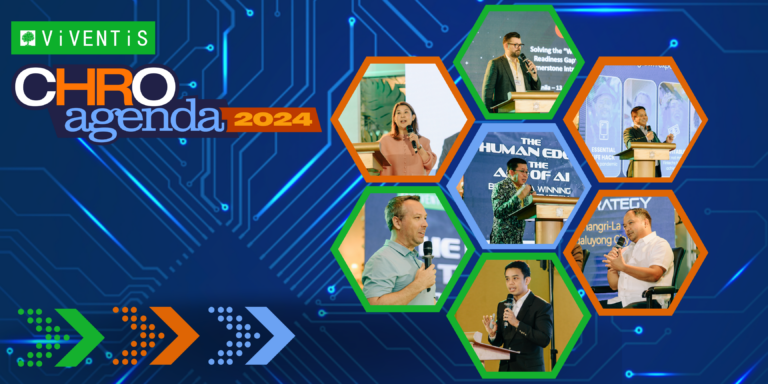2020 is definitely a year to be remembered. It was a year filled with challenges and unprecedented turn out of events for the whole organization. But despite the many hurdles it gave HR functions, it has taught us a thing or two about how we can build a better future for both our employees and the overall organization. In fact, your role as a talent development practitioner has been very essential now that everyone’s recovering from the post-pandemic aftershocks and planning for what’s ahead in this new future.

The Role of Talent Development
HR and L&D practitioners have become every organization’s very own front-liners. For the past months, you have been striking the balance between taking care of each employee’s well-being while trying to implement new strategies that would help the whole organization stay ahead of the game and prepare for what the next future would look like. The overall function of talent development has been the focus of everything that’s going in the organization. Adapting to the new ways of working while taking care of how employees respond to change is definitely not something that can happen overnight but with the right mindset, insights and strategy in place, you’re in for a great start for 2021!
Talent Development Trends
Based on the experience of our experts from the industry and clients who are undergoing major transformation, here are the top talent development trends that we foresee to be relevant in the coming years ahead. You can apply these trends in terms of three categories: People, Culture and Technology & Innovation.
People
1. Improving the Employee Experience
As human beings, it is natural for us to rely on a sense of belonging in order to stay productive and motivated but the shift to a new work environment, detachment from the physical office, and lack of face to face meetings might be the cause of poor performance and burn-out.
Organizations that create a great employee experience could avoid such risks from happening. As HR, having an understanding on how your people are currently behaving and responding to change is key to creating a positive employee experience. It is also important to take into consideration “3Ps” when implementing your employee experience strategy: personalization, productivity and performance.
2. Developing Essential Skills and Competencies
A recent report on workplace trends released by Udemy shows that one of the major goals of HR for 2021 is to address and close the skills gap. We see an opportunity in developing power skills and competencies that can help employees anticipate and survive any changes in the new world of work and most importantly, develop their own careers.
Here are some essential skills and competencies that you can focus on measuring and building for the next years to come:
Skills: Self mastery, emotional intelligence and cognitive flexibility
Competencies: Adaptability and resilience, analytical thinking and innovation, and communication
Read: Top 5 Future-Proof Competencies that will Remain Relevant in the Workplace
Building these power skills and competencies can also help boost an employee’s productivity and performance, and most importantly foster a culture that gives importance on well-being.
Culture
3. Employee Well-Being
Adapting to the new ways of working has greatly affected one’s mental health and as mentioned previously, your role as HR is to strike the balance between creating a new workplace environment and constantly checking on how employees react to the changes. Each individual acts to change differently and the more you and your teams can give importance to how employees respond to it, the easier it is to implement your new strategies. Successful organizations who foster a great culture of employee well-being always put their employees at the center of their business decisions.
Before getting started on well-being initiatives, have a genuine understanding on how your employees are currently behaving and adjusting to your new work environment to be able to perform their job well. Collaborate with leaders and enablers in the organization to see how each one is doing in terms of their physical, mental and social health.
4. Diversity, Equity and Inclusion (DEI)
A recent article released by Forbes stated that a lot of organizations are investing in diversity, equity and inclusion not just because of the benefits it can bring to the workforce but also because it is the right thing to do. Companies are starting to invest in diversity, equity and inclusion since it proves to be beneficial for employee productivity. We’ve also seen most HR functions who adapted and recovered at a faster rate this pandemic have been giving importance to building an inclusive environment for employees.
Confidence and trust in the workplace, most especially in leadership rely heavily on how diversity, equity and inclusion is being implemented in the workplace and companies who fail to work on these areas could miss out on business opportunities and innovation.
5. Changing Work Environment
Whether it’s a transition to a fully remote or hybrid remote work setting, we see flexible working to remain relevant in the next 5 years. What this means for HR and L&D practitioners is to consider building a work environment that would keep employees consistently engaged and productive regardless of their set-up.
This all goes back to what we mentioned earlier about being able to build essential skills and competencies that can retain an employee’s motivation, productivity and performance regardless of any changes that might come along the way. Apart from skills and competencies, well-being and technology are also critical components to include when managing remote and hybrid employees.
Technology & Innovation
6. Virtual Learning
In-person training will still become rare in 2021 but despite the freeze in ‘classroom led’ training and leadership programs, workplace learning remains to be a more valuable tool to help employees broaden and redirect their skills and competencies, develop resilience and improve collaboration within peers.
We know that digital learning and development will be critical to sustaining employees and having a performance-driven culture regardless of the work environment. As L&D practitioners, 2021 will be the best time to seek out fresh ideas, alternatives and approaches to make learning more engaging and interactive with the use of technology.
7. Learning Experience Platform (LXP)
For the past years, we’ve anticipated the rise of LXP or Learning Experience Platforms to drive a more self-directed learning approach for employees. As defined by THRIVE, LXP is a tool that enables end users to capture, share and consume content and knowledge from internal and external sources through means of a personalized and continuously adaptive experience.
Enabling employee performance and engagement through technology will be a big business challenge in 2021 and a Learning Experience Platform might be the right tool that can bring together all the employee experiences that you want to give out for the whole organization.
8. Blended Learning
Last trend we see on the rise is blended learning which as defined by experts, is the combination of powerful content, effective teaching methodologies, well designed dissemination of channels, enabled by efficient technology platforms such as Learning Management Systems (LMS) and Learning Experience Platforms (LXP). With the ongoing shift of structured corporate learning to a more agile operational learning model, blended learning will give your employees a more natural way to learn and work at the same time. According to Josh Bersin, in this world of automation, business transformation and continued obsolescence of skills, companies are realizing that delivering on a compelling learning experience is critical to business success.
Blended learning programs differ for every organization but one thing’s for sure: implementing a blended approach to learning can help you deliver a continuous learning experience to employees regardless of their location and work environment, improve operational efficiency and increase retention.
Our Talent Development experts here at Viventis can help you create and customize your organization’s blended learning program. Book a free consultation here and our experts will reach out to you.
Now that you know the trends, it’s time to build your Talent Development strategy as we welcome the new year and the next normal for organizations. You can always look back to these trends anytime by downloading your own copy of our Talent Development Trends to Implement in 2021 and Beyond.
{{cta(‘507080f6-b1bf-43a2-ae12-108b142ccd2e’)}}

